|
We
usually have lunch at the Royal Canadian Military Institute in Toronto
whenever I want to do some research. While my husband enjoyed a pint with
some of the veteran officers in the bar, I headed for the library to
search through a stack of books relating to a period in history I had
heretofore avoided like the plague - the period of Oliver Cromwell
(1599-1658), the struggle between a largely Presbyterian Parliament and
Puritan army, the invasion of Scotland (1650), the battle of Worcester
(1651) and the defeat of Charles II and royalist Scots. Richard Cromwell
(1626-1712) succeeded his father as Lord Protector (1658), while the Army
and Parliament struggled for power, until commonwealth was established
(1659). He lived abroad 1660-80, and later in England under an assumed
name. A man of virtue and dignity, he was forced into a situation beyond
his talents.
I
had read Montrose, For Covenant and King (1977) by Edward J.
Cowan. A native of Dumfries, Ted spent 14 years as head of the School of
Scottish Studies at University of Guelph (Ontario) and now heads the
Department of Scottish History at University of Glasgow.
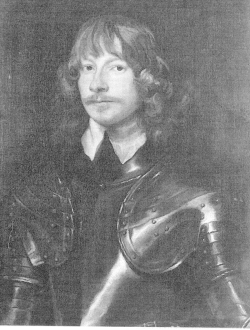 James
Graham, 5th Earl & 1st Marquess of Montrose
(1612-1650) was an imposing figure in the annals of Scottish history.
After spending five months in prison in Edinburgh Castle for refusing to
support the Scottish Parliament’s union with the English Roundheads, he
was appointed King’s Lieutenant in Scotland. With an undisciplined
Scottish-Irish force, Montrose won six battles in a year. In attempting
to translate his success into effective control of the Lowlands, he
allowed his forces to disperse and was defeated by David Leslie at
Philiphaugh near Selkirk (1645. James
Graham, 5th Earl & 1st Marquess of Montrose
(1612-1650) was an imposing figure in the annals of Scottish history.
After spending five months in prison in Edinburgh Castle for refusing to
support the Scottish Parliament’s union with the English Roundheads, he
was appointed King’s Lieutenant in Scotland. With an undisciplined
Scottish-Irish force, Montrose won six battles in a year. In attempting
to translate his success into effective control of the Lowlands, he
allowed his forces to disperse and was defeated by David Leslie at
Philiphaugh near Selkirk (1645.
Ordered to disband by the captured King, Montrose escaped to Norway, where
he was shocked to learn of the execution of Charles I, which he determined
to avenge. But his return to Scotland ended badly; his small force was
defeated at Carbisdale in April 1650. He was soon betrayed by MacLeod of
Assynt, taken to Edinburgh on the 18th of May, sentenced to
death by the Scottish Parliament without trial, hanged and disemboweled on
May 21.
After consulting the RCMI librarian, I chose four books, two from the
Collection of Col. Geo. T. Denison (Denison Armory, Toronto):
The Life and Campaigns of Alexander Leslie
First Earl of Leven 1582-1661
by
Charles Sanford Terry, M.A., University of Aberdeen
(London: Longmans, Green & Co., 1899)
Alexander Leslie was an illegitimate child. His father was George Leslie,
who commanded the garrison of the Castle of Blair in Athol, where
Alexander was probably born; his mother was a “wench in Rannoch”. After
the death of his wife, George Leslie married her in order to legitimate
his son who was by then already high in the service of Gustavus II
(Gustavus Adolphus), 1594-1632, who reigned Sweden 1611-32. In Sweden he
rose to the rank of Field Marshal. In 1638, aged 56, ‘the little old
crooked soldier’ took command of the Scottish Army of the Covenant during
the Bishops’ Wars and in 1640 he advanced into England, defeating the
Royalists at Newburn and holding Newcastle for the Parliamentarians.
Attempting to conciliate his enemies, Charles I created him Earl of Leven
(1641), but in 1644 he and his nephew, David Leslie (d 1682),
contributed to the defeat of the Royalist army at Marston Moor. He
opposed the Engagement but after the execution of Charles I, Leslie firmly
gave his allegiance to Charles II. He fought against Cromwell at Dunbar
and was imprisoned in the Tower of London, but was freed on the
intercession of Queen Christina, 1626-89, daughter and successor of
Gustavus II, 1632-54.
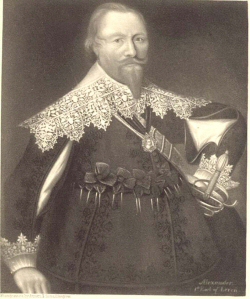
Leslie stands out as the Goliath of the Covenant; his career representing
Scotland’s military activity against Charles, as Montrose’s represents
Scotland’s efforts on the King’s behalf within the same period. He was
first and last a soldier. With the soldier’s instinct of obedience he
readily obeyed the State that employed him. In June 1651 his wife, Agnes
Renton of Billy, died at Inchleslie, and his attendance upon the army at
Stirling prevented him from being present at her funeral.
One of his daughters, namely Anna Leslie, married Hugh Fraser, Master of
Lovat (1624-1643) at Holyrood House in April 1642. Although Lord Lovat
was not in favour of his eldest surviving son and heir accepting a
Lieutenant-Colonel’s commission in the army of Scotland, procured for him
by General Leslie, the Master accepted the post and, while spending the
winter of 1642 in Edinburgh with his wife, suffered an illness from which
he never recovered. Hugh Fraser, 7th Lord Lovat (1591-1645)
survived the Master by three years, and was succeeded by his grandson,
Hugh Fraser, 8th Lord Lovat (1643-1672).
Meanwhile, Sir James Fraser of Brae (1612-49) continued as Tutor, to be
the ruling spirit of the administration of all the Lovat interests. He
was a staunch Presbyterian who took a prominent part in the business of
Inverness Presbytery and the General Assembly of the Kirk, and was a
leading Covenanter. Although the success of the Royalists was
short-lived, the loss of Inverness Citadel during the struggle, broke his
heart and, after returning from the south, he died in 1649.
Sir George Mackenzie, King’s Advocate, of Rosehaugh
His Life and Times 1636(?)-1691
by
Andrew Lang
(London: Longmans, Green & Co., 1909)
George was the eldest son of Simon Mackenzie of Lochslinn (s/o Kenneth
Mackenzie, Lord Kintalil) by his first wife Elizabeth, daughter of Rev.
Peter Bruce of Ferrar. In 1662 he married Elizabeth, daughter of George
Dickson of Hartree, one of the Senators of the College of Justice. In
1670 he married Margaret Haliburton of Pitcur. Of the children, the sons
died young; the eldest daughter, Agnes, married (ctr. 24 Jul 1680) Sir
James Stewart, afterwards first Earl of Bute.
Charles II used to say that, “in his reign all tragedies must have happy
endings.” The Restoration, as far as Scotland is concerned, was itself a
tragedy, with a happy ending, “as mortals reckon happiness.” After the
Restoration was past, the Union was at hand, the Union that destroyed the
legal absolutism asserted for the Corwn, north of the Tweed. Henceforth,
persecution was exercised by the Presbyterian majority over the
Episcopalian and Catholic minorities; thus the greatest happiness of the
greatest number was, so far, secured. Previously the minority had
persecuted the majority.
The Government’s object was to prevent the Kirk from reviving her old
pretensions, and embroiling Scotland in a civil war which might spread to
England. When he took office as Public Prosecutor in 1676, Mackenzie
became a persecutor. Few men were less naturally disposed to be
persecutors. Like Claverhouse, Mackenzie stands apart from his
companions. Both men served the Crown, and held that “a soldier only has
his orders.”
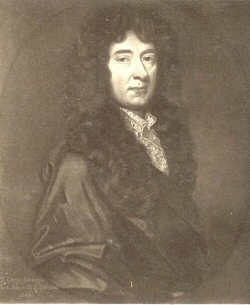 He
acquired notoriety as ‘Bluidy Mackenzie,’ the ruthless prosecutor of
Covenanters. The author leaves one with the impression that he didn’t
like his subject, although there are extensive quotes from Mackenzie’s
career as Lord Advocate. Lang is also skeptical of The Science of
Heraldry and notes: His Account of Our Old Families he leaves
in manuscript “as a new testimony to my kindness to my native country,”
which has never printed it, and probably never will. As Dean of Faculty
(1682), Sir George was prominent in establishing the Advocate’s Library
which became the National Library of Scotland (1925). The reference to
Claverhouse sent me in search of a biography purchased during a book sale
at the University of Guelph Scottish Studies Library. He
acquired notoriety as ‘Bluidy Mackenzie,’ the ruthless prosecutor of
Covenanters. The author leaves one with the impression that he didn’t
like his subject, although there are extensive quotes from Mackenzie’s
career as Lord Advocate. Lang is also skeptical of The Science of
Heraldry and notes: His Account of Our Old Families he leaves
in manuscript “as a new testimony to my kindness to my native country,”
which has never printed it, and probably never will. As Dean of Faculty
(1682), Sir George was prominent in establishing the Advocate’s Library
which became the National Library of Scotland (1925). The reference to
Claverhouse sent me in search of a biography purchased during a book sale
at the University of Guelph Scottish Studies Library.
John Graham of Claverhouse, Viscount of Dundee 1648-1689
by
Charles Sanford Terry, M.A., Burnett-Fletcher Professor
of History and Archaeology in the University of Aberdeen
(London: Archibald Constable & Co., 1905)
John Graham is known as ‘Bluidy Clavers’ or ‘Bonnie Dundee’, the latter
nickname probably conferred by Sir Walter Scott. The subject of several
ballads and novels, he was the Scottish Jacobite who was hated by the
Covenanters whom he tried to suppress in 1678-88. On 12th
November 1688 he was raised to the Scottish peerage by the title Viscount
of Dundee and Lord Graham of Claverhouse; the warrant ordering the issue
of letters patent tersely but adequately founded his peerage upon ‘the
many good and eminent services rendered both to his Majesty and his
dearest Royall Brother King Charles the Second by his trusty and well
beloved Councellor Major Generall John Graham of Claverhouse in the
severall offices…’
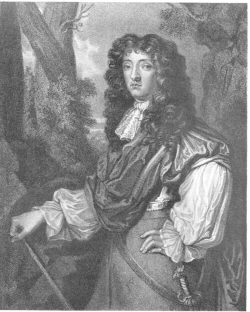
John Graham realized that James II was on the brink of irredeemable exile,
but he watched the futile warfare with dismay, and the treachery which
contributed to make it so. He fought for James in the Glorious Revolution
and raised a force to restore him, but was killed in battle at
Killiecrankie. They found him dying when the night had settled down over
the gory field. He asked how the day went. ‘Well for the King; but I’m
sorry for your Lordship,’ was the answer. ‘Tis the less matter for me,’
he replied, ‘seeing the day goes well for my master.’ Dundee was carried
to Blair, and there he rests, heedless of the ruin of his nearest and
dearest. As he lived, so he died, bathed in the glamour of ideals fast
setting to decline, the last expression of his century’s reckless
Stewartism. Within a fortnight of his death, Colonel James Mackay
(brother of Lieut.-General Hugh Mackay of Scourie) was stated to have been
‘the man that gave Dundee his passport to heaven or hell.’
Dundee’s titles and estates devolved upon his son James, then only three
months old, who was dead by December 1689. He was succeeded by David
Graham (Dundee’s brother), who was imprisoned in Edinburgh Castle, but
released in an exchange of prisoners, on 3rd December 1689,
about the time the 2nd Viscount died. As a declared rebel, the
Government took immediate steps against the new inheritor of Dundee’s
honours. On 3rd January 1690 an Order of Council sequestrated
his rents and those of others who had been in arms. On 2nd May
1690 a process of treason was raised against him. The Claverhouse
properties were bestowed on the Marquis of Douglas. The titular Viscounty
of Dundee passed to the Grahams of Duntrune.
Dundee was survived by his widow, Jean Cochrane, granddaughter of the
first Earl of Dundonald, whom he had married (ctr. 9th June
1684 at Paisley) against the wishes of their respective mothers. The
author discounts the absurd story of the curse that his mother is said to
have pronounced upon his widow’s second marriage with Lieut.-Colonel
William Livingstone, third Viscount Kilsyth. The story of her second
husband having killed Dundee at Killiecrankie in guilty collusion with the
Viscountess, was sufficiently disproved (Napier, vol. iii., p. 683). She
and her child by Kilsyth were accidentally killed in an inn at Utrecht on
16th October 1695.
Cromwell’s Scotch Campaigns: 1650-51
by
W.S. Douglas
(London: Elliot Stock, 1899)
In
1639-40 Scotland had been almost unanimous in opposing Charles I; Montrose
took with him only a few of his kinsmen and the more devotedly loyal
peers; but by 1648 almost the whole of the nobility of Scotland swung
round to support the Royal cause, which they had hitherto combated.
On
July 22, 1650 the invading force arrived on Scottish soil; its total was
under 16,500 men. The cavalry and infantry, numbering respectively five
and ten thousand odd, included a large proportion of veteran troops, and
even some who had fought almost continuously against the Cavaliers since
Edgehill battle nearly eight years before. Their conduct was to prove
them no tyros in the field.
The chief leaders of the Scots army were the two famous Leslies. The old
Earl of Leven, though still in name Lord General, was virtually on the
shelf. In June 1650 the Parliament assured him it would ‘requyre no moir’
of him ‘than his aidge might comport wt.’ The real command was in the
hands of his nephew Lieut.-General David Leslie (grandson of the 5th
Earl of Rothes), who was now about to try his luck against those English
with whom, ever since the day of Long Marston Moor, he had ridden side by
side. Not for nothing had he had experience of the professional
soldiership of the Continent, and he was about to give his old comrade
Oliver such a lesson in strategy as he had scarcely been used to in the
slap-dash, rough-and-ready warfare of Cavalier and Roundhead.
The author presents an interesting account of the events leading up to
Dunbar Drove, and those which followed in the next twelve month’s
campaigning, based on contemporary newspapers of 1650-51 [Vol. E of the
catalogue of the collection of the ‘King’s Pamphlets’ preserved in the
British Museum].
I
suppose it is a natural instinct to look for references to Frasers. The
author refers to Charles’s departure when he learned that the Stirling
executive was set upon evicting his courtiers. In his Journal of the
Affairs of Scotland, 1650, Sir Edward Walker relates how it had been
intended that he should make his way into Fife and rally the loyal gentry
there, whilst Perth was simultaneously seized by 1,000 of the Earl of
Athole’s Highlanders; but that the King incautiously told the secret to
Buckingham, and was induced by the Duke to give up his plans.
Clarendon mentions this ‘very empty and unprepared design, contrived and
conducted by Doctor Frazier, without any foundation to build upon’
(History, vol. iii, pt. ii, Oxford Edition, 1807- p. 596); and that pique,
or genuine fright about the sinister clearance of his Court, hurried
Charles into trying his luck by a desperate dash for liberty. In any
case, the young King made use of the accustomed pretext of a sporting
excursion; rode carelessly out of Perth on October 4th ‘as if
going on hawking’; and only halted for the night when he had put forty-two
miles of road and hill-track between him and the Fair City. He declared
he had been assured of that fact by his physician, Dr Frazer, who was, by
universal consent, his chief ‘confident’ in the transaction, the
go-between who should have ensured his reaching the Northern Royalists.
Clarendon mentions Frazer in connection with this affair, as the typical
busybody blessed with more zeal than circumspection. [For a brief chart of
the family of Sir Alexander Fraser of Durris, physician to Charles I & II,
see CFSC Canadian Explorer, September 2003, page 9]
The Scots Army 1661-1688
With Memoirs of the Commanders-in-Chief
by
Charles Dalton, F.R.G.S.
(Edinburgh: William Brown, 1909)
I
found this book enlightening and it helped me to better understand and
appreciate a turbulent period in the history of Scotland from the
perspective of the soldiers who fought in these divisive wars.
“Soldiers have an undoubted right to claim
The greatest honours and the most lasting name.”
Scotland’s Standing Army consisted of a mere handful of Troops from 1661
to 1666. In the summer of the latter year the exigencies of circumstances
necessitated a material increase to his Majesty’s forces.
The officers appointed to the new-raised levies during the early years of
the Restoration were mostly veterans who had served in the Civil Wars of
Charles I. Some had fought with Montrose, while others had served against
him. In this army were found “Engagers” who had marched into Lancashire
under the Duke of Hamilton, and had suffered defeat at Preston by
Cromwell. There were also not a few devoted Royalists who had fought at
Dunbar and Worcester, and those soldiers who had shared in the hardships
of Lord Glencairn’s expedition and in General Middleton’s defeat at Loch
Garry. Lastly, there were representatives of the oldest and noblest
families north of the Tweed who had served with the Scots Brigade in
Holland and with the old Scots Regiments (the Royal Scots) in France.
It
is an indisputable fact that the Scots Army from the Restoration to the
Revolution has received scant justice at the hands of Scottish writers in
general. It appears that officers and soldiers have been handed down to
posterity by Covenanting writers, and apologists, as cruel and relentless
persecutors. Take for instance the Rev Robert Wodrow’s magnum opus
on The Sufferings of the Church of Scotland. This labour of love,
which was not published till 1726, was chiefly founded on hearsay evidence
and the contemporary works, and pamphlets, of Covenanters who well knew
how to blacken their enemies’ characters. As a literary compilation, Mr
Wodrow’s book is entitled to our respect, but many of the “military
atrocities” which are detailed at length in the aforesaid work must be
taken, in many instances, as gross exaggerations.
It
has been asserted that the Cromwellian forces cleared out of Scotland a
few months after the Restoration. However, according to an undated
petition to Charles II, in 1660, “the Noblemen, Gentlemen and Burgesses of
Scotland, met at London,” prayed his Majesty “that all the English forces
may be removed out of Scotland, before the sitting of the Parliament, and
that your Majestie employ such of your Scots subjects as you sall (sic)
thinke fit for securing of the garisons and the peace of the kingdome.”
In reply, the King promised to remove the forces as soon as possible. It
was owing to the Earl of Lauderdale’s influence with the King that the
four citadels built in Scotland by Cromwell, viz - Ayr, Perth, Inverness,
and Leith were ordered to be dismantled. The citadel at Ayr was given to
Hugh, Earl of Eglinton as a reward for past services; Perth to the
magistrates of the town; Inverness to the Earl of Moray; and Leith to the
Earl of Lauderdale in May 1662.
Mr
Dalton provides interesting biographical information on some of the
important, albeit less well-known, officers in the Scots Army:
Thomas Morgan, Commander in Chief
Thomas Morgan was second son of Robert Morgan of Llanrhymny. He served in
the Low Countries and under Bernard of Saxe Weimar in the Thirty Years’
War. In 1651 he was in Scotland with General George Monk, who requested
Cromwell to send down a commission for Morgan to be Colonel of Dragoons.
Morgan took Dunottar Castle and after a three weeks’ siege, 26th
May 1652, was actively employed against Lord Glencairn and General
Middleton in 1653-54.
Early in 1654, Morgan took the strong castle of Kildrummie, and on 19th
July defeated Middleton at Loch Garry. Morgan was promoted Major-General
and returned to London in the spring of 1657 when summonsed by Cromwell to
take part in the expedition sent to the assistance of the French in
Flanders. He was knighted by the Protector Richard Cromwell, 25th
November 1658. As Commander-in-Chief, Morgan took a conspicuous part in
celebrating Charles II’s birthday at Edinburgh, 19th June
1660. On 1st February 1661, Charles II created General Morgan
a baronet. When the Anglo-Dutch war broke out in 1665, the King appointed
Sir Thomas Morgan Governor of Jersey, in which post he displayed the same
military science and energy that had distinguished him during his long and
eminent career. He is believed to have died in 1679, and was succeeded by
his son, Sir John Morgan, who became Colonel of the Welsh Fusiliers in
1692.
The Earl of Middleton, Captain-General of the Forces 1661-63
John Middleton (1619-73) was the eldest son of Robert Middleton of
Caldhame, Kincardineshire. He began his career as a pikeman in Hepburn’s
Regiment in the service of France. In 1639 he became a Captain in
Montrose’s Army which made a triumphant entry into Aberdeen, 30th
March 1639. In 1642 Middleton entered the English Parliamentary Army and
was made Major-General after Edgehill. He commanded a large body of
cavalry at the second battle of Newbury and by his bravery contributed to
the King’s defeat. When he resigned his commission (1644), in consequence
of the “Self-denying Ordinance,” he was Lieut.-General in Sir William
Waller’s Army.
Middleton then joined the Covenanting forces and was second in command to
David Leslie at the battle of Philiphaugh near Selkirk (1645) where
Montrose was routed. The Estates rewarded Middleton with 25,000 merks and
the command of the forces in Scotland. He pursued Montrose, burnt the
latter’s castle of Kincardine, and carried fire and sword through
Aberdeenshire and parts adjacent. When Charles I ordered Montrose to
disband his forces, Middleton negotiated terms with the Great Marquis and
is said to have granted better conditions than were approved of by the
Assembly. In 1647, he repressed a Royalist rising under the Marquis of
Huntly. On 11th May 1648, he was commissioned Lieut.-General
of Horse by the Committee of Estates, in that army composed of “Engagers,”
under the Duke of Hamilton, raised to rescue Charles I from the
Cromwellians, “but to keep up the Covenant.” He was wounded at Mauchline
Moor, in June 1648, while dispersing 2,000 extreme Covenanters who
resented the Government’s “Engagement” policy. He distinguished himself
in action at Preston, Lancashire, where he was wounded and taken
prisoner. Middleton was sent to Newcastle and imprisoned there, but made
his escape.
After the execution of Charles I, Middleton headed a Royalist rising in
the Highlands which was unsuccessful. The General Assembly threatened him
with excommunication, but he was allowed to sign the ‘declaration and
acknowledgment’ presented to those who had taken part in the Engagement.
In
July 1650 Middleton joined Charles II in Scotland, but he resented the
humiliating conditions imposed upon the young monarch by the Committee of
Assembly and the Estates. He raised a Royalist force and was joined by
several of the most powerful Scottish nobles with their adherents, but
Cromwell’s victory over Leslie at Dunbar called for united action against
the invader, and the “ostracised Royalists” returned to the Covenanting
fold. Charles bowed to his fate and was crowned King on the basis of the
Covenants, 1st January 1651. Middleton, however, who was
“banned for Malignancy,” was excommunicated by James Guthrie, Minister of
Stirling, against the advice of influential Covenanters, and did penance
in sackcloth in the Church of Dundee, 11th January 1651.
As
Major-General of the Horse, Middleton distinguished himself at the battle
of Worcester by driving back a wing of Cromwell’s Army and was wounded.
He was taken prisoner and sent to the Tower, but escaped, in his wife’s
clothes, and joined Charles II at Paris in the autumn of 1652. The exiled
monarch appointed him Commander-in-Chief of the Royalist forces to be
raised in Scotland. Middleton left Paris in January 1653, but went to The
Hague to try and raise money from the States of Holland for his master’s
cause. It was not till January 1654 that he returned to Scotland with
sixty Scots officers, ammunition, and a small supply of ready money. On
his arrival, he found a goodly Royalist force in arms under the Earl of
Glencairn whom he appointed his second in command.
The combined forces fought with Monk’s Troops on several occasions, but on
19th July, Middleton was defeated at Loch Garry by Colonel
Morgan with the loss of his “white charger, gold, papers, and all his
baggage.” He endured many hardships, and in April 1655 he succeeded in
escaping to Emden on board a friendly ship. He joined Charles II at
Cologne. In 1656 and 1657 Middleton was employed by the exiled monarch on
a mission to the town of Dantzic where he was to try and raise troops,
arms, and the sinews of war. We are told that “Middleton was well
received in Dantzic and raised a few men, but the want of money reduced
him to great straits, and he was obliged to disband them again.”
At
the Restoration he returned to England on the same ship with Charles II.
On 1st October 1660, the King created this faithful soldier
Viscount Clermont and Fettercairn, and Earl of Middleton by Letters
Patent. He was appointed Governor of Edinburgh Castle and Captain-General
of the Forces in Scotland, as well as Lord High Commissioner to the
Parliament.
Middleton made a “progress” to the West of Scotland accompanied by the
Scottish forces, but his popularity was gone. In the exercise of his high
office as Lord Commissioner, he had, with the aid of his faction,
engineered through Parliament the Acts of Indemnity, Billeting, and
Fining. The Act in question was “a clause to the Indemnity Act by which
twelve persons, to be selected by Ballot, should be excepted from public
service.” Middleton had devised this plan for shelving some of his
political rivals “and by unsparing corruption had succeeded in placing
Lauderdale, Sir Robert Moray, and Lord Crawford among the twelve.”
Lauderdale was too astute for Middleton. The former explained the purport
of the Act to the King and said, “What if they billet me, sir?” Charles
answered that the billeters could not meddle with his servants. But
Lauderdale told the King that he was actually billeted, and the Act was
passed by the Commissioner without consulting his Majesty. This was the
real cause of Middleton’s disgrace and not, as has been supposed, his
arbitrary measures for re-introducing Episcopacy into Scotland -
particularly the Act passed by him and the Privy Council at Glasgow, 1st
October 1662, “by which the clergy who refused to conform to episcopacy
were deprived of their benefices.”
He
resigned his Commission as Captain-General 5th January 1664,
and went to reside at Guildford with his friend Thomas Dalmahoy who had
married the widow of William, Duke of Hamilton. He was too good a soldier
to be kept long unemployed. On 30th June 1666, he was
appointed Lieut.-General of all the Militia Forces in Kent and was given a
Troop of Horse in 1667. The following May, Middleton was made Governor of
Tangier and Colonel of the Tangier Regiment. He died at Tangier in 1673,
the result of a fall downstairs.
The author notes that it was intemperance during the latter part of his
life that ruined Middleton’s career and occasioned his end. He was
patriotic and brave. His soldiers loved him as a commander and his
officers had perfect trust in his general-ship. Lord Clarendon, who was
no mean judge of soldiers in general and commanders in particular, says of
Middleton: “He was a man of great honour and courage and much the best
officer the Scots had.”
The Earl of Rothes, Captain-General of the Forces 1664-1667
John Leslie, 7th Earl of Rothes (1630-1681) had commanded the
Fife Regiment of Horse at the battle of Worcester (1651), and was sent to
the Tower, but was allowed on several occasions to repair to Scotland to
look after his own affairs there, until he was finally released in the
spring of 1660. Although his father (the 6th Earl) had in 1638
helped to draft the Covenant, the 7th Earl was a strong
Episcopalian, and he aligned himself with Archbishop James Sharp
(1613-79).
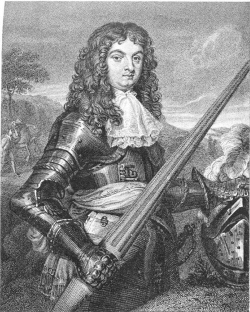
In view of the continuation of the Anglo-Dutch War and increasing
disaffection in the West of Scotland, Lieut.-General William Drummond of
Cromlix (d 1688) and General Thomas Dalyell of Binns (d
1685) were recalled from the Russian Service by Charles II. On 24th
September 1667, Rothes received the Royal command to lay down his
Commission, although he retained the command of his Troop of Guards till
February 1676, when it was disbanded by the King’s order. On 29th
May 1680, he was created Duke of Rothes. Dying without male issue in July
1686, his dukedom became extinct, but the earldom of Rothes descended to
his elder daughter, Lady Margaret Leslie, who became Countess of Rothes in
her own right.
Lieut.-General Thomas Dalyell commanding the Forces
employed against the Covenanters 1666-1667
Scotland was under the curse of ecclesiastical rule from 1643 to 1651. To
escape the thraldom of Episcopacy, the Scottish nation declared for the
most extreme form of Presbyterianism. The Church fabric, erected with
infinite pains by James VI and Charles I, came toppling down. Bishops
were sent packing. Royalists who were termed “Malignants” were
excommunicated when in Scotland, and forbidden to return, if out of the
Kingdom, by the all-powerful General Assembly. On 18th May
1650 an Act was passed by the Scottish Parliament “excluding divers
persons from entering within the Kingdome from beyond seas, with his
Majestie, until they give satisfactione to the Churche and Stait” (sic).
The names of ‘Thomas Dalzell of Binns’ and ‘Sir George Monro’ stand out in
the aforesaid Exclusion Act.
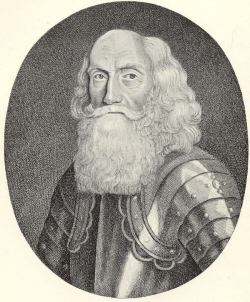
General Thomas Dalyell (c1599-1685), was chosen by his Sovereign to
command the Scots Forces in the summer of 1666. He made no secret of his
hatred to the Covenanters and their cause. He styles them “a damnet
crue,” and suggests “extirpation” as the only way to stamp out the
rebellion. The General meant transportation to Barbados, Virginia, and
New England. In a letter to Kilmarnock dated 15th January
1667, he says there will be no peace in Scotland till all the “non conform
Minesters be baniched and the puretan laidays sent to beir them compane.”
The 17th century Scottish peasantry was ignorant, superstitious
and credulous, ready to believe any cock-and-bull story spread by local
agitators to serve their own end. Many of the cruelties of Montrose were
libels spread by Covenanters when the Great Marquis turned Royalist. When
Cromwell invaded Scotland it was reported that his soldiers would cut off
the breasts of all married women.
The disbandment of the Scots Forces was followed by Rothes, Dalyell and
Drummond being relieved of their commands. The handful of troops which
composed the Scots Army was left without a general officer for seven
years, when the Earl of Linlithgow, as senior officer, acted as
commander. When Monmouth’s commission as Captain-General was recalled in
September 1679, Dalziel became Commander-in-Chief of the Forces (1st
Nov. 1679-23rd Aug. 1685).
Colonel the Earl of Linlithgow
Acting Commander-in-Chief 1667-1674
George Livingston, 3rd Earl of Linlithgow (1616-90) had
suffered severely during the supremacy of Cromwell. At the Restoration he
was made a Privy Councillor and in September 1662 was appointed
Lieut.-Colonel of the Foot Guards, then newly raised. Unfortunately, on 8th
August 1667, the Privy Council brought about a new method of paying the
Troops, which ultimately led to an outbreak of mutinies.
On
17th March 1672 England and France declared war against
Holland. The Government had the difficulty of raising and paying
additional forces. A Regiment of 1,000 strong was raised in Ireland and
sent to England for service with the Fleet, under the command of the Duke
of Buckingham. The Irish Establishment was also drawn upon for twelve
Companies which were formed into a composite Regiment. A Marine Regiment
was likewise levied in England. Charles II had, before war was declared,
turned his attention to Scotland. He wanted an Infantry Regiment of 1,000
strong, levied in that Kingdom, “for service with the Fleet or elsewhere,”
and to be paid by the Scottish Treasury.
During his command of the forces in Scotland, Lord Linlithgow exercised a
firm and beneficent rule, but the Covenanters did not take kindly to any
measures for securing the peace and quiet in the Kingdom. In the summer
of 1668, a report was spread that the rebels in the West had again risen.
On 19th October 1669 the Scottish Parliament met, the Earl of
Lauderdale then being Lord High Commissioner. Lord Linlithgow was
replaced by Sir George Monro, but Linlithgow later replaced Monro as
Major-General commanding the Forces 1677-79.
Sir George Monro, Major-General
Commanding the Forces 1674-1677
Sir George Monro (c1601-93) was a younger son of Colonel John Monro of
Obsdale, Ross-shire. At an early age he accompanied his uncle, Colonel
Robert Monro, to Sweden where he served with the Scots Regiment. Later,
he took part in the German campaign under Gustavus II. He accompanied his
uncle to Ireland in 1642, and had succeeded him as Major-General of the
Scots forces in Ulster, when he was summoned by the Parliament to Scotland
to take part in the Duke of Hamilton’s Expedition into England.
On
27th October 1677, the King wrote to Sir George Monro
“authorising him to command in chief Our Guards and all such other Forces,
both Horse and Foot, as shall be by Warrant of Our Privy Council of
Scotland drawn together for opposing any Rebellion or Insurrection
there.” In less than two months, the Earl of Linlithgow was appointed
Major-General of the Forces in Scotland “in place of Sir George Monro Our
late Major-General whose Commission is hereby declared void.” No reason
was given, but it was apparent enough. In view of an expected rising,
Lauderdale had formulated a plan for bringing the disaffected shires into
a state of subjection, and Monro would not fall in with Lauderdale’s cruel
policy.
When the Scots Army marched into England in October 1688, Monro was
appointed Major-General of the Militia in Scotland by Commission dated 24th
October 1688, and was granted a yearly pension of
£200.
General Hugh Mackay, a good judge of soldiers, requested the Government in
1690, to make Sir George Monro a Privy Councillor, and grant him a pension
“in order to help Mackay to take necessary measures for the security of
the Kingdom in his (Mackay’s) absence in Holland.”
Sir George Monro died on 11th July 1693, at Newmore Castle. In
1642 he had married Anne Monro (c1621-47), daughter of his uncle
Major-General Robert Monro, by whom he had a son Hugh, who succeeded to
Newmore. In 1649 he had married Christian, only daughter of Sir Frederick
Hamilton of Manner, and sister of Gustavus, 1st Viscount
Boyne. By this marriage Sir George had two sons, John who died in 1682
unmarried; and George, who inherited the estate of Colerain (Culrain).
The latter’s heir male ultimately succeeded to the baronetcy of Foulis.
The Earl of Linlithgow
Major-General Commanding the Forces 1677-1679
With a view of checking the French conquests in the Low Countries the
English Parliament favoured an Anglo-Dutch alliance against France. Under
the plea of assisting the Dutch, Charles obtained large subsidies from
Parliament early in 1678, to help raise additional forces in his three
kingdoms. The Scots Army trebled its strength. The Earl of Linlithgow
made a progress through the disaffected West in the autumn of 1678. On 23rd
October 1678, the King wrote to Lord Linlithgow approving his services as
Major-General.
Peace was signed between Holland and France at Nimeguen in August 1678.
The English Parliament voted standing Armies illegal and the Commons
requested the King to disband all the forces raised since September 1677.
Charles had to comply. He had hoodwinked the nation with the pretence of
an Anglo-Dutch alliance against the French. To keep up the fiction, a
strong British contingent had been sent to Flanders under the Earl of
Feversham. In the meantime, Charles was in receipt of a secret pension
from Louis XIV to keep England neutral. The wholesale disbandment of the
new English levies did not affect the Scots Army, but Lord James Douglas’s
Regiment was disbanded in January 1679, having been raised for the English
Establishment.
A
new form of “The Military Oath” was sanctioned by Charles II and
subscribed by Lauderdale, on 10th December 1678. To the mass
of the Covenanters who had never borne arms as trained soldiers, and to
whom military discipline was as odious as religious conformity, the new
form of oath was merely regarded by them as an additional weapon put into
the hands of their relentless persecutors by a godless Government. On 3rd
May 1679, Dr. James Sharp, Archbishop of St. Andrews, while riding in his
carriage with his daughter on Magus Moor, near St. Andrews, was brutally
murdered by a marauding band of zealous Fife covenanters waiting in ambush
for another target. This provoked further rebellion in the west and the
persecution of John Graham of Claverhouse.
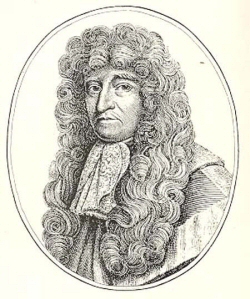
Linlithgow was a good regimental officer, but he had not the advantage of
Dalyell’s or Drummond’s experience of warfare. When the crisis came he
proved vacillating and changeable. It was jocularly said of English
soldiers during the seventeenth century, that they could not fight without
their beef, their beer, and their beds; but Scottish soldiers of that
period were considerably more hardy. A famous Scottish general (Lord
Clyde) wished for nothing better than to fight a pitched battle with
10,000 well-fed Englishmen, 10,000 half-starved Scotsmen, and 10,000
half-drunk Irishmen!
In
1684 the 3rd Earl of Linlithgow was appointed Lord Justice
General; holding this high office until 1688. He died 1st
February 1690, and was succeeded by his eldest son George, Lord
Livingston.
James, Duke of Buccleuch and Monmouth
Captain-General of the Forces in England and Scotland 1679
James Crofts, alias Fitzroy, alias Scott (1649-1685) was the
son of Charles II by Mrs. Lucy Barlow (nee Walter). By Letters patent,
dated 14th February 1663, he was created Duke of Monmouth,
installed a Knight of the Garter, 28th March 1663. By
Lauderdale’s advice to the King, the little Duke was married 20th
April 1663, to the greatest child-heiress in Scotland - Anne, suo jure
Countess of Buccleuch, aged twelve. Monmouth took the surname of Scott,
and he and his bride were created Duke and Duchess of Buccleuch in
Scotland, “with remainder to their heirs male, in default of which to
their heirs whatever descending from the Duke’s body, succeeding to the
estate and Earldom of Buccleuch. For sixteen and a half years fortune
smiled on him and he basked in the King’s favour. He went from one high
military post to another. No one could call Monmouth a carpet knight, for
he witnessed the sternest side of war on the Continent.
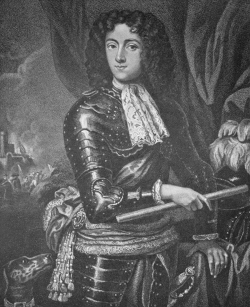
The Duke’s Commission as Captain-General of all his Majesty’s Forces in
England, Wales, and the town of Berwick-upon-Tweed, dated 27th
April 1678, was altered by Monmouth’s secretary (by his master’s order)
erasing the obnoxious word “natural” in the body of the Commission, and so
changing the words “our most entirely beloved natural Sonne James Duke of
Monmouth” into “our most entirely beloved Sonne…” In order to appease the
anger and jealous fears of his brother, the Duke of York (later King James
VII), the King was obliged to cancel the Commission, which was done by
Charles “taking up a pair of scissors and without a word clipping a piece
out of his own Royal signature.”
By
June 1678, a report gained ground that the King had secretly married Mrs.
Barlow, before her son’s birth, and that the marriage contract was in
existence. To prevent any trouble after his death, Charles made a solemn
declaration that “he never gave nor made any contract of marriage nor was
married to Mrs. Barlow alias Waters, the Duke of Monmouth’s
mother.” Notwithstanding this set-back, Monmouth pursued his command as
Captain-General, but without a fresh Commission, till June 1679, when he
was sent to Scotland to take command of the Royalist Forces. On 12th
June 1679 James, Duke of Buccleuch was appointed “Captain-Generall of all
his Majtyes Forces already raysed or hereafter to bee raysed as well
standing as militia within his Majtyes Kingdome of Scotland… which
Commission is to continue in force during his Majtyes pleasure.” The
commission was recalled in September. On 1st November 1679,
the King wrote the Scots Privy Council that he had thought fit to recall
the Commission granted “by Us unto James, Duke of Buccleuch to be Generall
of Our Forces in Our ancient Kingdome… and that We look upon Our
Lieut.-Generall Dalyell (General Thomas Dalzell) to be the Commander in
Chiefe of all Our said Forces.”
The author refers briefly to Monmouth’s return to England without the
King’s permission; his plotting and scheming; his desertion of his amiable
and talented Duchess; his neglect of his children; his liaison with the
young Baroness Wentworth - a peeress in her own right - who left home, and
sacrificed her maiden honour to share the Duke’s second term in exile in
Brussels; his invasion of England; defeat at Sedgemoor, 6th
July 1685; and his execution in Tower Hill nine days later. He notes
there is a strange similarity between the half-educated Duke of Monmouth
and the highly-accomplished Mary, Queen of Scots, in that each was endowed
by nature with the fatal fascination of good looks coupled with
captivating manners.
© Article by Marie Fraser, Clan Fraser Society of Canada |

